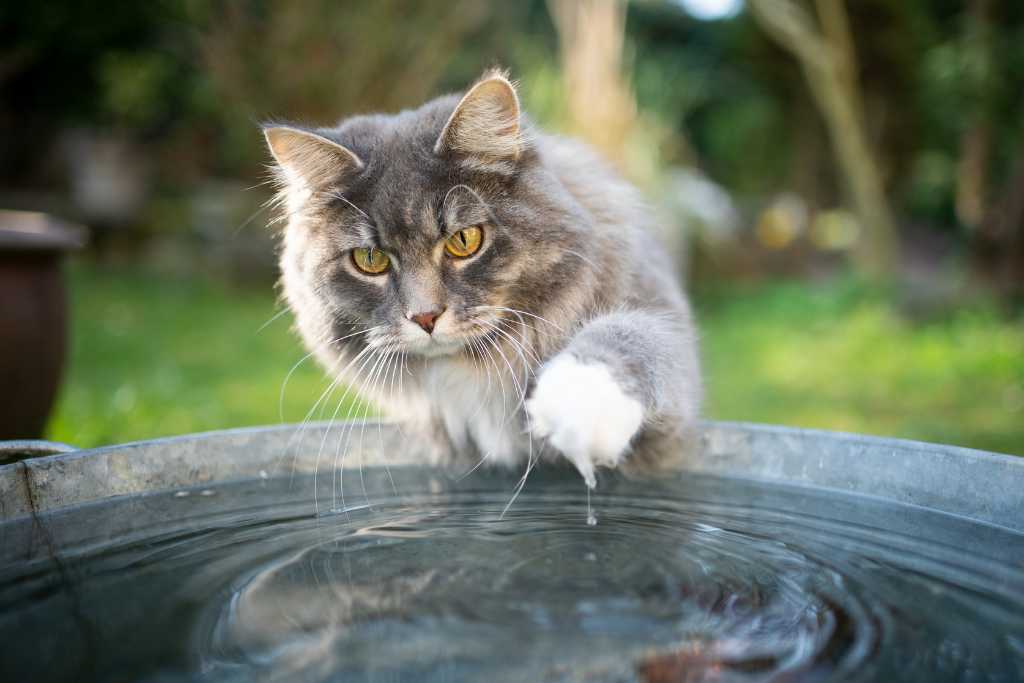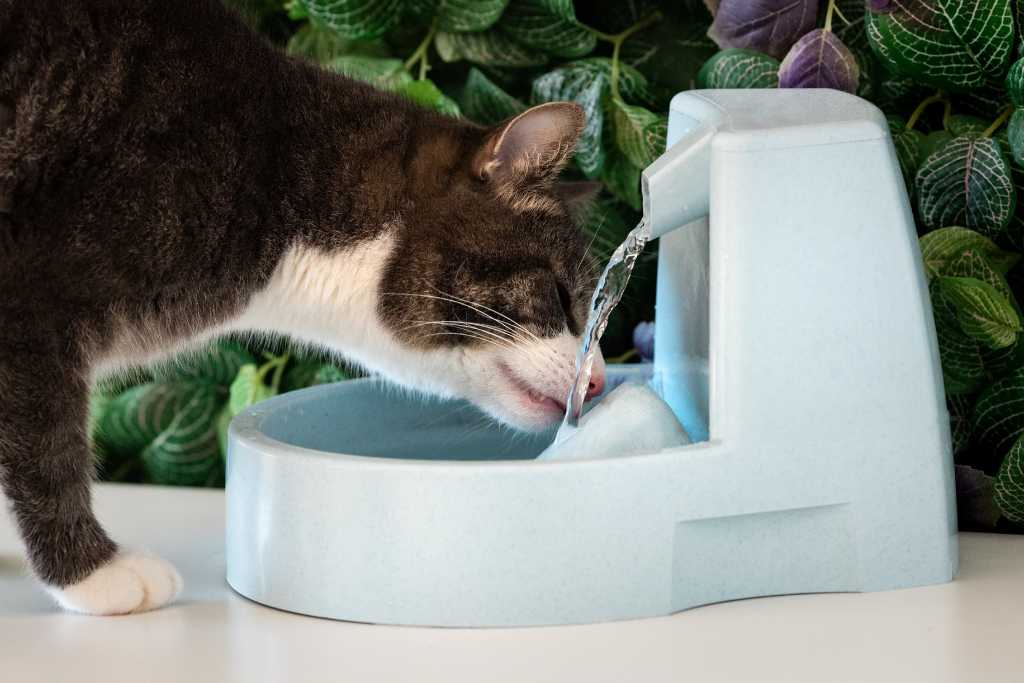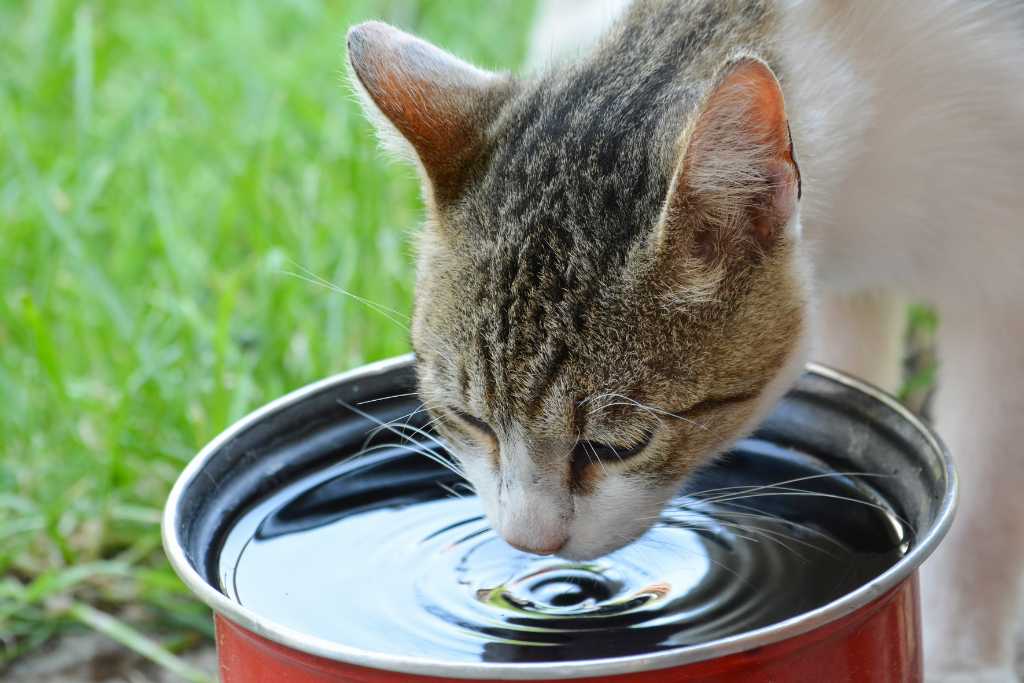AWAY FROM FREE SHIPPING
NICE. SHIPPING IS ON US!
AWAY FROM FREE GIFT
CHOOSE A FREE GIFT DURING CHECKOUT!
YOUR CART IS EMPTY. SHOP NOW.
As a cat parent, you may have noticed that your feline kid has an increased thirst. While occasional thirst is normal, excessive and persistent thirst in cats can be a cause for concern. Hydration plays a vital role in maintaining a cat's overall health and well-being, and understanding the reasons behind increased thirst can help you identify potential underlying issues. In this article, we will explore the various factors that may contribute to excessive thirst in cats and what actions you can take to ensure your cat stays properly hydrated.

To comprehend what excessive thirst entails, it is crucial to understand the average water intake for a cat. On average, a healthy adult cat typically consumes between 150-300 millilitres of water per day. Factors such as age, activity level, diet, and environmental conditions can influence the exact amount. However, any significant deviation from this range may warrant further investigation.
Dehydration occurs when a cat's body loses more water than it takes in, leading to an insufficient fluid balance. It can be caused by various factors, including inadequate water intake, excessive fluid loss (e.g., through vomiting or diarrhoea), or underlying health issues. Dehydration can have serious consequences for cats, affecting their organ function, digestion, and overall well-being. Identifying and addressing the causes of excessive thirst is crucial to prevent dehydration.

Diet
Cats are naturally designed to obtain moisture from their food. As such, cats consuming a primarily dry food diet may experience increased thirst due to the low moisture content of dry kibble. This can lead to a compensatory increase in water intake. If you notice similar behaviour in your cat and she’s on a dry diet, consider switching to a wet diet like canned or raw cat food. On average, these wet cat food would contain at least 75% moisture. Dry cat food would typically contain 10% to 12% moisture content only. Another option is to add some water or bone broth to your cat’s dry food. Discuss with your veterinarian and gradually transition your cat to a balanced wet diet to address the issue.
Hot weather
Cats are sensitive to environmental conditions, particularly heat. During hot weather, cats may drink more water to regulate their body temperature and stay hydrated. Additionally, factors such as dry air or increased physical activity can contribute to increased water intake.
Kidney disease
Kidney disease is a common ailment of older felines. One of the primary symptoms of kidney disease is increased thirst. The functions of the kidneys include eliminating waste products, balancing electrolytes, producing certain hormones and vitamins, and maintaining the body’s water balance. When the kidneys are compromised, they may be unable to concentrate urine effectively. The cat’s urine becomes more dilute and she will start to urinate more. This then causes the cat to drink more to maintain her hydration. If you suspect kidney disease, it is vital to consult your veterinarian for proper diagnosis and treatment.

Diabetes
Diabetes is another condition that can cause excessive thirst in cats. In diabetic cats, the body has difficulty regulating blood sugar levels. When blood sugar levels are consistently high, the excess glucose cannot be utilised by the cells and spills over into the urine through the kidneys. Glucose in the urine acts as an osmotic agent, drawing water from the body into the urine. As a result, the cat passes larger volumes of urine, leading to increased fluid loss and subsequent dehydration. Dehydration triggers the body's thirst response as a mechanism to encourage increased water intake and compensate for the fluid loss. This manifests as increased thirst (polydipsia) in cats with diabetes. Other symptoms of diabetes include increased appetite, weight loss, and frequent urination. Early detection and management of diabetes are vital for your cat's health.
Hyperthyroidism
Hyperthyroidism is a common endocrine disorder in older cats, characterised by an overactive thyroid gland. Alongside other symptoms such as weight loss and increased appetite, cats with hyperthyroidism often exhibit increased thirst. Treating hyperthyroidism can help alleviate excessive thirst and restore normal hydration levels.
Medications and other medical conditions
Certain medications, such as corticosteroids, can cause increased thirst as a side effect. Additionally, various medical conditions, including urinary tract infections, liver disease, and certain cancers, can manifest as increased thirst in cats. Seeking veterinary advice is crucial to diagnose and address any underlying medical conditions.

Ensuring that your cat remains properly hydrated is essential for their overall health and well-being. Here are some tips to encourage healthy hydration.
Fresh water availability
Provide your cat with clean, fresh water at all times. Consider using a water fountain or multiple water bowls placed in different locations to entice your cat to drink more. It is recommended to get a non-slip bowl with a wider opening like this Petz Route Cat Feeding Bowl for easy drinking.
Wet food diet
Incorporate water, broth or wet food into your cat's diet to increase their overall moisture intake.
Moisture-rich treats
Offer moist treats, such as small pieces of cooked chicken or tuna in water, to provide additional hydration. When buying treats, choose liquid puree treats like this Absolute Holistic Caviar Bisque (Tuna & Fish Roe) Cat & Dog Treats.
Water intake monitoring
Keep track of your cat's water intake to identify any significant changes or abnormalities. This can help you detect potential health issues early on. It can be helpful to get a water dispenser with a graduated scale to monitor your cat’s water consumption
Regular veterinary check-ups
Schedule routine check-ups with your veterinarian to monitor your cat's overall health and address any concerns promptly.

Excessive thirst in cats can indicate various underlying issues that require attention. By understanding the causes of increased thirst and taking appropriate measures, you can help ensure your cat remains adequately hydrated and maintain their overall health. Remember, if you notice any significant changes in your cat's water intake or behaviour, consult your veterinarian for a proper diagnosis and guidance. A well-hydrated cat is a healthy and happy cat.

Comments will be approved before showing up.



